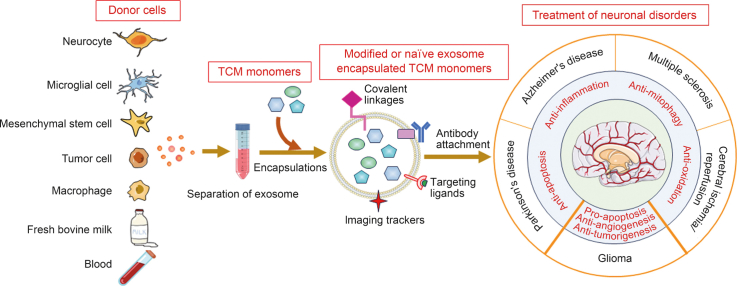
 i_need_contribute
i_need_contribute
A traditional Chinese medicine (TCM) monomer is a bioactive compound extracted from Chinese herbal medicines possessing determined biological activity and pharmacological effects, and has gained much attention for treating neuronal diseases. However, the application of TCM monomers is limited by their low solubility and poor ability to cross the blood-brain barrier (BBB). Exosomes are small extracellular vesicles (EVs) ranging in size from 30 to 150 nm in diameter and can be used as drug delivery carriers that directly target cells or tissues with unique advantages, including low toxicity, low immunogenicity, high stability in blood, and the ability to cross the BBB. This review discusses the biogenesis, components, stability, surface modification, isolation technology, advantages, and disadvantages of exosomes as drug carriers and compares exosomes and other similar drug delivery systems. Furthermore, exosome-encapsulated TCM monomers exert neuroprotective roles, such as anti-inflammation, anti-apoptosis, anti-mitophagy, and anti-oxidation, in various neuronal diseases, including Alzheimer's disease (AD), Parkinson's disease (PD), multiple sclerosis (MS), and cerebral ischemia and reperfusion (CI/R) injury, as well as anti-drug resistance, anti-tumorigenesis, anti-angiogenesis, and promotion of apoptosis in brain tumors, providing more inspiration to promote the development of an exosome-based delivery tool in targeted therapy for neuronal diseases.
Keywords: Traditional Chinese medicine monomer, Exosome, Drug delivery, Neuronal disease
